
Welcome to CivilGEO Knowledge Base
Welcome to CivilGEO Knowledge Base

Welcome to CivilGEO Knowledge Base
Welcome to CivilGEO Knowledge Base
CivilGEO’s software provides a keyboard shortcut library where you can edit or assign your own keyboard shortcuts for any command. For example, if you frequently use the Extract Cross Section Geometry command, you can assign the keyboard shortcut Ctrl+E to start the Extract Cross Section Geometry command.
Our software supports the following keyboard shortcut combinations:
Follow the steps below to customize or view the keyboard shortcuts list:
![[Define Keyboard Shortcuts] Options backstage page button](/wp-content/uploads/sites/25/2023/11/Customizing-Keyboard-Shortcuts-Imge-1.png)
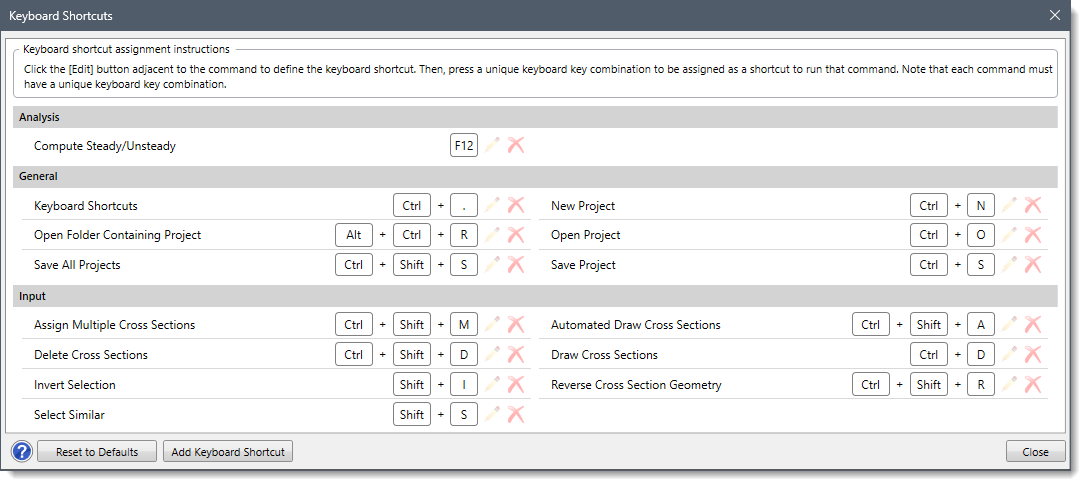
The above dialog box lists all the shortcut key combinations along with their command names. Commands related to a certain ribbon menu section are grouped together and named after the ribbon menu. For example, commands related to the Input ribbon menu will be grouped under the Input section.
Note that each section and its associated commands are arranged alphabetically.
The following sections describe how to create, modify, or remove keyboard shortcuts and interact with the above dialog box.
To modify the keyboard shortcut of a command, follow the steps below:
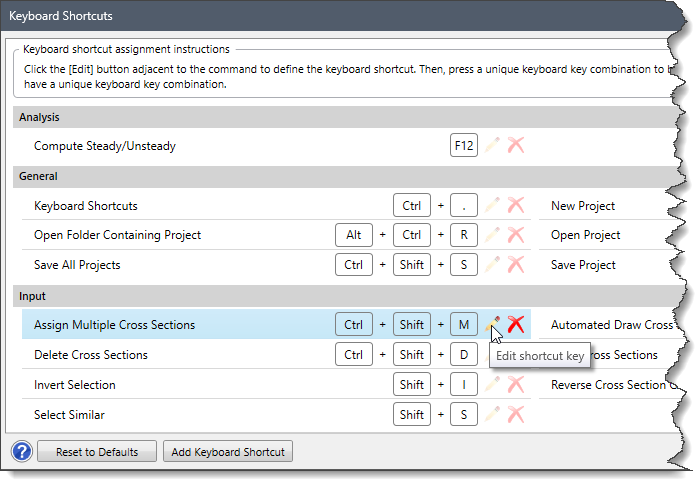

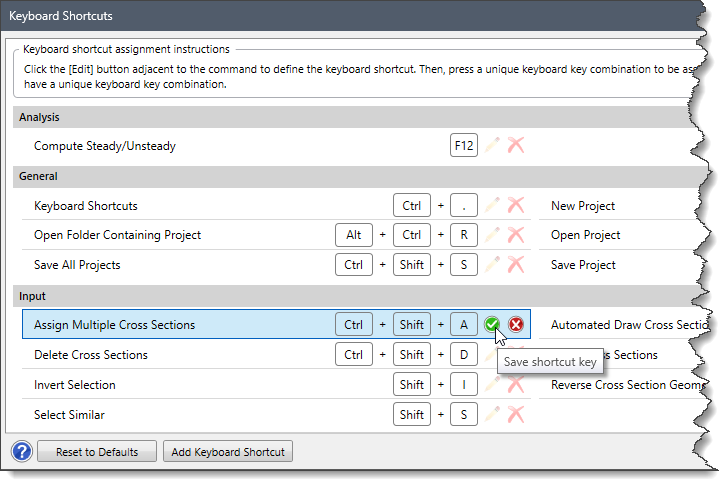
To add new commands to the keyboard shortcuts library, follow the steps below:
![[Add Keyboard Shortcut] button](/wp-content/uploads/sites/25/2023/11/Customizing-Keyboard-Shortcuts-Imge-6.png)
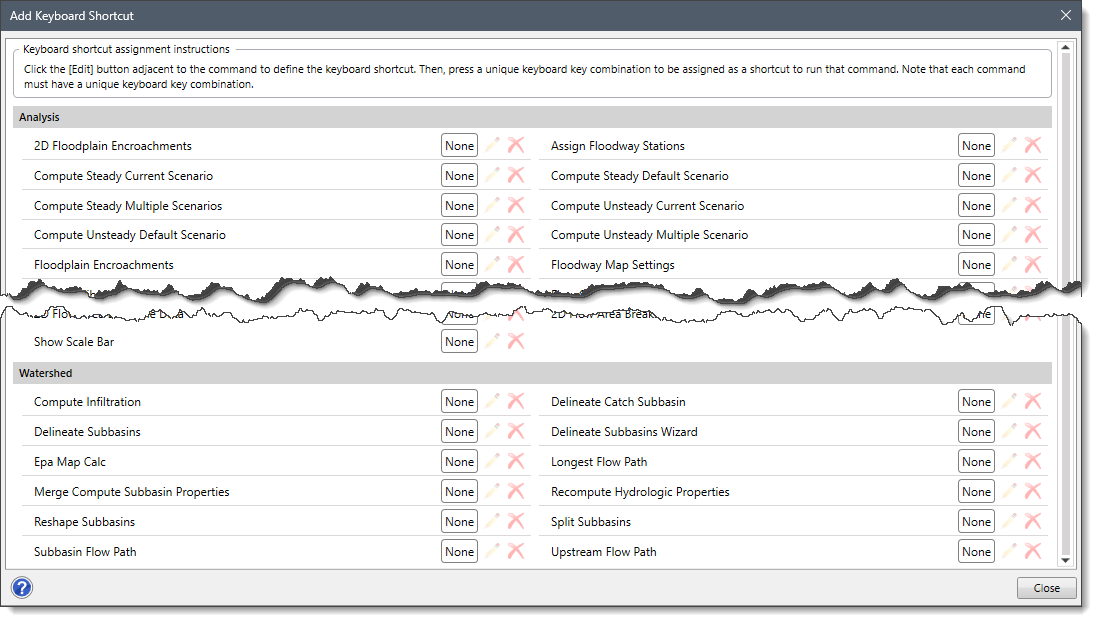
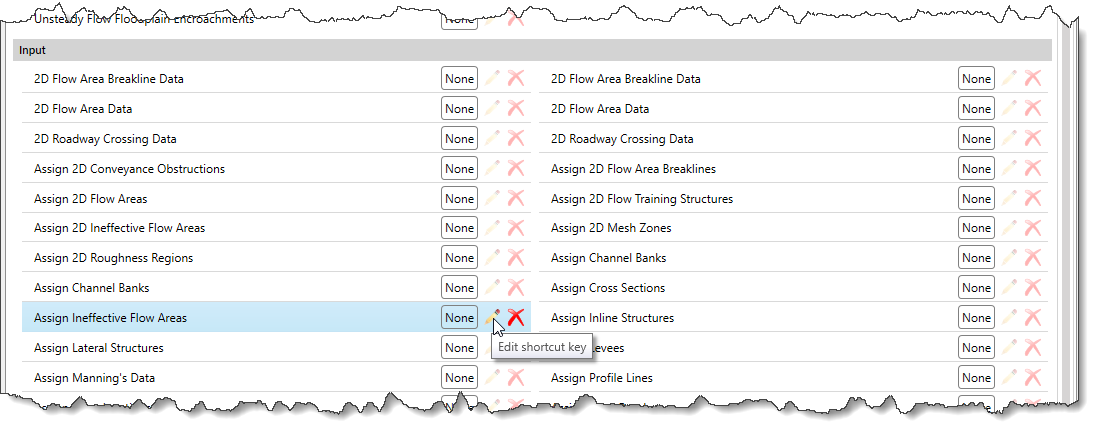

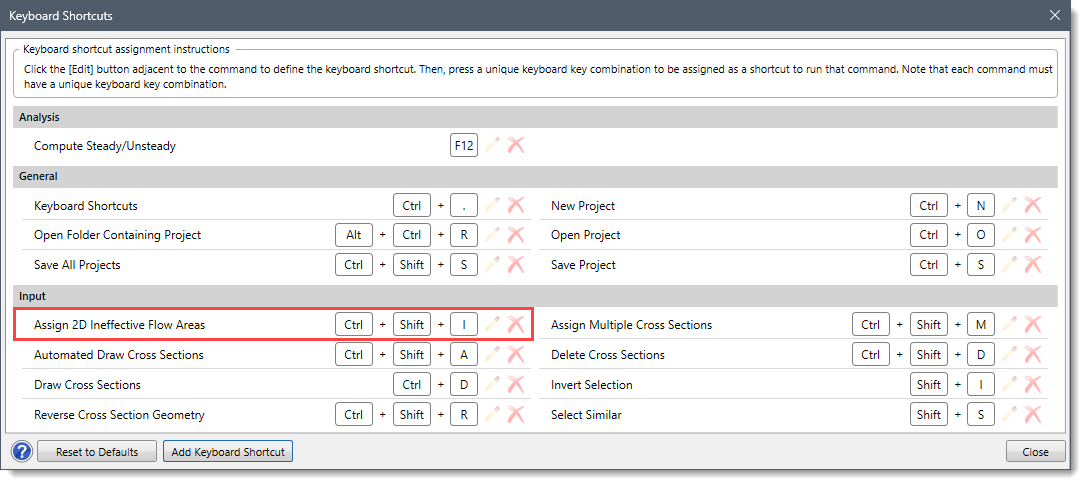
Note that to remove a keyboard shortcut, the user can click the X option adjacent to the assigned shortcut keys as shown below.

To reset the keyboard shortcuts to default values, follow the steps below:
![[Reset to Defaults] button](/wp-content/uploads/sites/25/2023/11/Customizing-Keyboard-Shortcuts-Imge-12.png)

 1-800-301-02-955
1-800-301-02-955
 608-729-5100
608-729-5100
(US and Canada)
 [email protected]
[email protected]
 +1 608-729-5100
+1 608-729-5100
CivilGEO India
Graphix Tower, A-13 A
3rd Floor, Sector 62
Noida, Uttar Pradesh 201309
IndiaTel:
1-800-301-02-955 or
+91 022-3831-8601
CivilGEO United States
8383 Greenway Blvd
6th Floor
Middleton, WI 53562
USATel:
608-729-5100 or
800-488-4110
Copyright © CivilGEO, Inc. All rights reserved. The CivilGEO logo, “GeoSTORM”, “GeoHECHMS”, “GeoHECRAS”, and “Ready To Engineer” are registered trademarks of CivilGEO,Inc.
All other brands, company names, product names or trademarks belong to their respective holders.
We use cookies to give you the best online experience. By agreeing you accept the use of cookies in accordance with our cookie policy.
When you visit any web site, it may store or retrieve information on your browser, mostly in the form of cookies. Control your personal Cookie Services here.
The ZoomInfo WebSights snippet drops three cookies to track Unique Visits:
1. _pxhd - Related to the Perimeter X security layer (Perimeter X isused to prevent bot attacks).
2. _cfduid - Related to the CloudFlare security layer (CloudFlare is the Network Security protocol that ZoomInfo uses to orchestrate the rate limiting rules).
3. visitorId - This is how WebSights identifies recurring visitors








